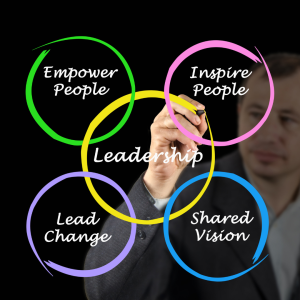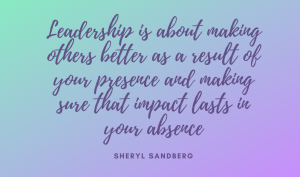 How Trust, Not Time, Is the True Barrier to Delegation
How Trust, Not Time, Is the True Barrier to Delegation
Let’s cut the polite narrative.
You’re not still doing it all because you have to. You’re doing it because deep down, you don’t trust anyone else to do it as well as you would.
You’ve said it before:
“There’s just no one to delegate to.”
“No one else can do it like I can.”
“It’s quicker if I do it myself.”
It feels true. But it isn’t the whole truth.
If you’re a Founder, MD, or COO of a mid-sized service business, your delegation problem isn’t about time or team—it’s about trust. And that’s exactly where scalable leadership begins: understanding that letting go starts with trust, not time.
When Letting Go Feels Like Losing Control
I get it. When I left corporate life and started building my own thing, I thought I’d feel free. In control. Liberated.
But here’s what happened: I became everything. Strategist. Salesperson. Copywriter. Operations lead. Coach. Admin. Visionary and vacuumer.
And I didn’t delegate because I didn’t trust that anyone else would get it, care like I did, or carry the weight properly.
What looked like control was actually fear dressed up as competence.
This is where scalable leadership truly begins — with the courage to build trust-backed systems, not just work harder.
Control Isn’t a Strength. It’s a Symptom of Missing Scalable Leadership
Most founders aren’t micromanagers. They’re high-performers and geniuses who’ve poured everything into their business. But that drive, when left unchallenged, turns into a bottleneck. A dependency. A single point of failure.
And that comes at a cost:
-
Decision fatigue: You’re making every call, even ones others should own
-
Leadership bottlenecks: Your team waits because they’re used to you stepping in
-
Stalled growth: The business can’t outpace your capacity
-
Burnout: You’re not leading anymore, you’re firefighting and so are your employees
This isn’t sustainable. And it’s not what leadership is meant to feel like.
The Real Reasons You Can’t Let Go
Let’s unpack what’s really going on.
1. You don’t fully trust your team
And not because they’re incompetent, but because there’s no structure underpinning trust. No clear expectations or systems for accountability. And no safety net for mistakes.
2. You’re scared of things going wrong
Here’s the truth: Delegation is risky. But the greater risk is building a business that grinds to a halt without you.
3. Your team isn’t ready to lead………yet
Most SME teams are full of capable doers, not confident leaders. That’s not their failure. It’s a signal that your leadership systems haven’t evolved with your business.
This isn’t about blame. It’s about recognising where your business has outgrown your current setup—and building something better.
So What’s the Fix?
We work with founders like you every day. Leaders who’ve built something brilliant, but are now trapped by their own success. That’s why we created Scalable Leadership Systems.
It’s not a theory. It’s a framework grounded in real businesses, real people, and real leadership transitions.
Here’s what we help you do:
-
Empower smarter decisions: Define who decides what, when, and why
-
Build internal leadership: Develop your managers into leaders who can carry real weight
-
Establish rhythm and rigour: Create meeting cadences, check-ins, and escalation points that work
-
Create clarity-backed trust: Replace guesswork with transparency, role clarity, and shared standards
This isn’t about stepping back. It’s about stepping up into strategic leadership, not survival mode.
 What Happens If You Don’t?
What Happens If You Don’t?
Let’s not sugar-coat it:
-
You’ll stay stuck in delivery mode, never quite freeing yourself up for growth
-
Your best people will leave, frustrated by your need for control
-
You’ll become the problem, even though you started out as the solution
-
Your stress becomes your culture, and no one wants to inherit that
- Yes, maybe you pay more, but you attract people who are just in it for the money. That is not the culture you want!
You don’t need to loosen your grip entirely. But you do need to stop choking the potential out of your business.
Ready to Build What Comes Next?
Scalable Leadership Systems is for founders who are done being the hero and ready to build a business that doesn’t need saving every time something shifts.
Because real leadership isn’t about doing it all.
It’s about building the system that lets others lead, while you hold the vision.
Let go. But do it wisely.
structure, clarity and support.
Want to talk about building leadership systems that scale?
Whether you’re looking to pivot your business model, upskill your workforce, or reinvent your brand, we provide the expertise and support to turn your vision into reality. Let’s collaborate to unlock your potential and create a future-ready version of your business or career.
Enjoyed this blog? Check out my other blogs on various resilience and leadership topics here.

 You think everything’s fine. Until it isn’t.
You think everything’s fine. Until it isn’t.
 Ready to Stop the Scroll?
Ready to Stop the Scroll? How to Escape Founder Dependency and Scale Your Business Without Burnout
How to Escape Founder Dependency and Scale Your Business Without Burnout
 How It Changes Everything
How It Changes Everything The signs are subtle at first.
The signs are subtle at first.
 Try This: A Structural Gap Check
Try This: A Structural Gap Check The Rise of Fractional Executives: A Smarter Model for Agile Leadership
The Rise of Fractional Executives: A Smarter Model for Agile Leadership
 3 Questions to Ask Before Bringing in a Fractional Executive
3 Questions to Ask Before Bringing in a Fractional Executive (But That’s Exactly What They’re Missing)
(But That’s Exactly What They’re Missing)
 Or Just Corporate Lip Service?
Or Just Corporate Lip Service?
 From Ambition to Accountability
From Ambition to Accountability
 Why Work With Me
Why Work With Me Let’s get one thing straight: just because you’ve got the title doesn’t mean you’re leading.
Let’s get one thing straight: just because you’ve got the title doesn’t mean you’re leading.
 Real Leadership Moves Emerging Leaders Need to Make Now
Real Leadership Moves Emerging Leaders Need to Make Now Strategies for Resilient Teams
Strategies for Resilient Teams
 Promote Physical Wellbeing
Promote Physical Wellbeing
 A UK Leader’s Guide
A UK Leader’s Guide
 Provide Context and Perspective
Provide Context and Perspective
 Leadership is at a crossroads. With AI dominating headlines and reshaping how decisions are made, we’re being asked to rethink what leadership actually is. We’re not talking about abstract ideas anymore — this is about how leadership actually plays out, and the impact it has when the pressure’s on.
Leadership is at a crossroads. With AI dominating headlines and reshaping how decisions are made, we’re being asked to rethink what leadership actually is. We’re not talking about abstract ideas anymore — this is about how leadership actually plays out, and the impact it has when the pressure’s on.
 One of the most frequent challenges I see leaders grappling with is Emotional Intelligence (EI). Some leaders are even still sceptical about the reality of emotional intelligence.
One of the most frequent challenges I see leaders grappling with is Emotional Intelligence (EI). Some leaders are even still sceptical about the reality of emotional intelligence.


 Ready to Build the Kind of Resilience That Puts You Ahead of the Pack?
Ready to Build the Kind of Resilience That Puts You Ahead of the Pack? Unlocking Employee Potential
Unlocking Employee Potential
 Your Next Steps: Leading the Learning Revolution
Your Next Steps: Leading the Learning Revolution The Secret Weapon for Business Success
The Secret Weapon for Business Success his.
his. A Critical Challenge for UK Business Leaders
A Critical Challenge for UK Business Leaders
 Leverage Technology to Connect
Leverage Technology to Connect Your Next Steps: Leading the Connection Revolution
Your Next Steps: Leading the Connection Revolution A Leader’s Guide to Building a Positive Culture in the Workplace
A Leader’s Guide to Building a Positive Culture in the Workplace
 Your Next Steps: Leading the Respect Revolution
Your Next Steps: Leading the Respect Revolution Insights from Global Trends
Insights from Global Trends
 Case Study: Resilience in Action
Case Study: Resilience in Action




 Holistic Leadership
Holistic Leadership In the realm of business, politics, education, and beyond, leadership stands as the cornerstone of progress and success. Good leadership isn’t just about authority or power; it’s about inspiring and empowering others to reach their fullest potential. Let’s delve into the essence of leadership, exploring the qualities and actions that define exemplary leaders.
In the realm of business, politics, education, and beyond, leadership stands as the cornerstone of progress and success. Good leadership isn’t just about authority or power; it’s about inspiring and empowering others to reach their fullest potential. Let’s delve into the essence of leadership, exploring the qualities and actions that define exemplary leaders. Perseverance: Be able to make it through challenging times
Perseverance: Be able to make it through challenging times I’m Sophie, and I’m going to share with you some insight into my personal journey as an employee living and working with Attention Deficit Hyperactivity Disorder (ADHD). As any person living with neurodiversity will tell you, it’s never a straightforward or linear journey. It comes with a lot of trial and error, ups and downs, and a lengthy process of finding what works for you. However, having the support of your colleagues and employers will be beneficial to anyone like myself.
I’m Sophie, and I’m going to share with you some insight into my personal journey as an employee living and working with Attention Deficit Hyperactivity Disorder (ADHD). As any person living with neurodiversity will tell you, it’s never a straightforward or linear journey. It comes with a lot of trial and error, ups and downs, and a lengthy process of finding what works for you. However, having the support of your colleagues and employers will be beneficial to anyone like myself. Clear communication and expectations have also been essential. My employer takes the time to provide me with detailed instructions and deadlines, ensuring that I know exactly what is expected of me. As someone who struggles following vague instructions, I need as much detail and information as possible. Asking for more clarity and receiving it has been great for my work.
Clear communication and expectations have also been essential. My employer takes the time to provide me with detailed instructions and deadlines, ensuring that I know exactly what is expected of me. As someone who struggles following vague instructions, I need as much detail and information as possible. Asking for more clarity and receiving it has been great for my work.